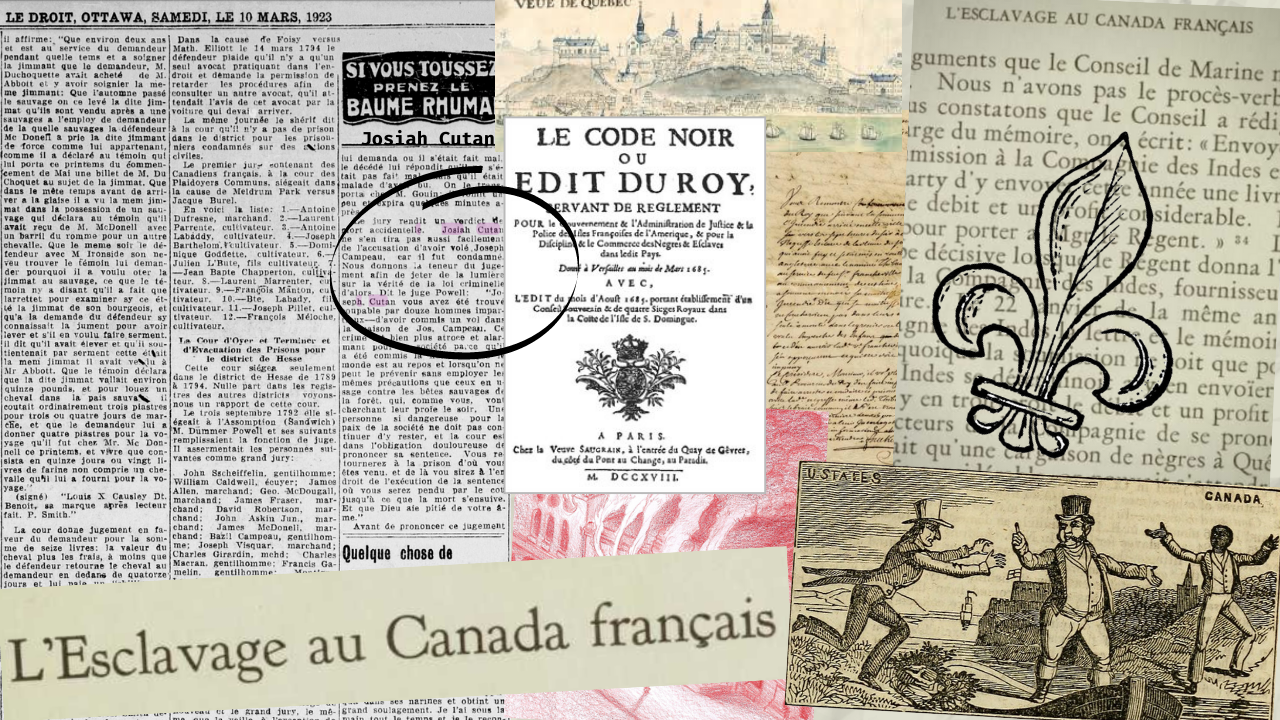Why this side of the border shouldn’t be patting itself on the back
Three prominent black Montreal-based activists came together on the evening of Feb. 28 to discuss the history of anti-black racism in Canada, contemporary issues for people of colour in the country, as well as issues faced by the black LGBTQ+ community.
The panel was organized by Concordia’s Centre for Gender Advocacy, and was part of the Centre’s Thick Skin speakers series—a series of curated discussions on race, gender and political resistance. The event was moderated by Jada Joseph, a peer support training and drop-in co-coordinator for the Centre.
“I will attempt to do a synopsis of anti-black racism in Canada in 10 minutes,” panelist Robin Maynard said with a small laugh. Maynard is a Montreal-based feminist activist and writer. She is currently working on her first book, Policing Black Bodies: State Violence and Black Lives, which will be released this year.
Maynard said the idea for her book came from her work with Stella, a Montreal non-profit organization that offers support and information for sex workers in the city. For almost 10 years, Maynard did street-based outreach with sex workers in the city—providing them with psychological and emotional support, as well as health services. She said this work raised her awareness about deeply-rooted racism and violence against black women in Canada.
“The level of extremely vindictive racialized targeting… like calling people monkeys, pointing guns at their heads… extremely horrific violence that was [happening] almost daily, often including sexual assault, which was not being reported anywhere,” Maynard said about what she saw and heard about in her work. She wasn’t seeing these issues reflected in media outlets, so she took it upon herself to explore black women’s issues in a larger historical and socio-political context.
Maynard gave the audience some historical context on anti-black racism in Canada. She said many Canadians assume black slavery was only present in the United States. The first black slave was brought to Quebec in 1628. While Canada didn’t have plantation-based slavery, Maynard said people bought and exploited black people for various types of labour, reducing them, as slavery does, to mere commodities.
Maynard stressed that Canada was not transparent about its involvement in slavery. “In the 18th century, even as slavery is being practiced, you see the beginning of Canada’s self-representation as this benevolent state,” Maynard said. She said evidence of slavery in Canada was cast aside with its abolition in 1834. Following 1834, textbooks in Canadian schools made no mention of any black slavery in Canada’s history. In Canada, Maynard explained the history of black people being viewed and treated as criminal, as dangerous or as unwanted can actually be traced back to the 17th and 18th centuries.
Panelist Marlihan Lopez delved further into these deep-rooted stereotypes, and how they influence the way black people are treated today in Canada and abroad. Lopez has a master’s degree in international development and has over a decade of experience in community organizing, feminist activism and cultural education.
“We carry on these stereotypes of sexual deviancy. So when we report [sexual violence], there’s a tendency of not being believed because we’re not associated with the ‘perfect victim’ which is white, which is middle-class,” said Lopez about the phenomenon of hypersexualization of the black woman.
According to a 2009 report by the American Bureau of Justice Statistics, one in 15 black women report sexual violence. The same is true in Canada. According to the Canadian Women’s Foundation, “studies show that when women of colour report violence, their experiences are often taken less seriously within the criminal justice system and their perpetrators routinely receive less harsh punishments.”
Lopez linked this back to the expectations of strength and resilience from black women. “The matriarch stereotype, the strong black women, auto-sufficient, ‘we don’t need to ask for help.’”
Lopez said the fight against racism needs to be an intersectional fight—that is, a fight that considers gender identity, ability, sexual orientation, class in addition to race. Intersectionality is the idea that we cannot consider social action on race issues independent from other connected issues regarding gender and class, for example. “We have to fight for the liberation of all our peoples. It’s necessary for our movements to be intersectional because, if not, we are going to keep perpetuating the same oppressive systems that we’re trying to combat,” said Lopez.
“I’ve always felt that intersectionality multiplies itself exponentially,” said Montreal-based singer-songwriter and LGBTQ+ rights activist J. Elise Barbara. Barbara explained that there are so many different elements of one’s identity that need to be considered when fighting for race equality.
Barbara said while piercing the milieu wasn’t easy at first, they felt being a transgender black musician helped them thrive in the music industry in Montreal. “I initially felt a lot of resistance coming from people. And through the years, I’ve felt a shift in how open-minded people seem to be,” Barbara said.
They felt there has been a shift in recent years in Montreal for transgender acceptance—a kind of left-leaning trend, especially present in the city’s music industry. “I initially felt a lot of resistance, coming from people. And through the years, I’ve felt a shift in how open-minded people seem to be,” said Barbara. However, they said they felt cynical about this acceptance, because “it might not last.”
The next Thick Skin speakers series event will take place on Thursday, March 9 at 11:30 a.m. in H-760. The discussion will explore Indigenous “feminisms and womanisms.”
Erratum: an earlier version of this piece mis-paraphrased panelist Marlihan Lopez on the link between the worldwide hypersexualization of the black woman to sex slavery in Cuba and Brazil. We sincerely apologize for the mistake. O.E.
